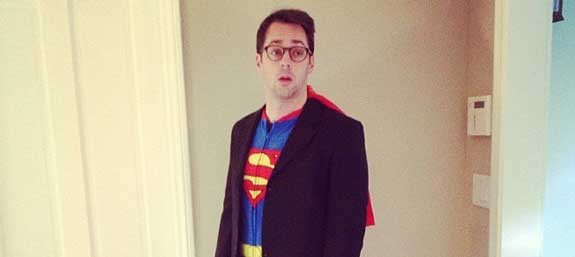The Conceit of Clark Kent

We’ve all donned, at one time or another, a costume made from something pretend. A hero, a princess, a warrior, an artist — we found our identity through this play. Imaginations have always been part and parcel to the fabric of childhood but we grew up, forced to focus on the road ahead, and we tuned out the noise around us. Many of us stopped paying attention to the calls for help and the need for something extraordinary. We started super and became civilian.
I remember watching Superman soaring through the sky. I wanted to be special like him. I wore a Superman outfit under my onesie, snap-button pajamas complete with butt-flap. It was my favorite thing to wear. I loved knowing the secret under my clothes, that I was a hero in waiting. At any moment I could shed what made me seem like an everyday person and become superhuman should the need arise. I felt so powerful. The costume convinced me of it.
Clark Kent, looking back on him now, was always as human as he claimed he was mortal. He placed himself behind the spectacles and rooted himself in the reality of his station in life. Clark tethered himself to mankind with human-like tokens to reinforce his humanity, and by proxy, his averageness.
If we can learn anything in the time we have with our kids, it’s that children can be a catalyzing influence. They are our gamma rays, our radioactive spiders, our mutations. They take the chemistry of our soul, our memories and our physicality, and transform us. Our bodies suddenly feed, grow, sense and protect these tiny humans. While we all have our kryptonite, we use these newfound powers to make micro-history, dents in the universe. We can save our future from cataclysm in small, infinitely casual ways. That’s pretty super.
So, maybe it’s not our job to teach our kids who they are but for us to learn from them who they could be, and simply help them remove the mundane part of their human disguise. For who knows what heroism secretly awaits inside.




